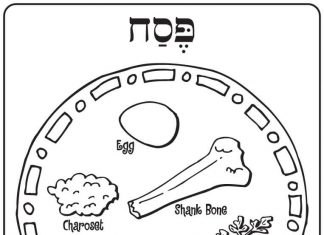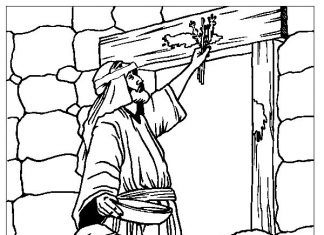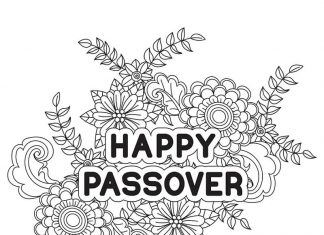Passover (Easter): Passover is a holiday celebrated by Christians to commemorate the resurrection of Jesus Christ. It is the culmination of Lent, a 40-day period of fasting and penance. The date of Pascha is calculated differently in the Eastern (based on the Julian calendar) and Western (based on the Gregorian calendar) traditions, which often leads to a difference in the date of celebration between the Eastern and Western Churches. The holiday is characterized by special rituals, prayers, songs and meals, and in many cultures also the tradition of painting eggs.
Passover Coloring Pages
Information
- Origins: The term "Passover" comes from the Hebrew word "Pesach," which refers to the Jewish festival commemorating the Israelites' exodus from Egypt. In Christianity, the term has taken on a new meaning, referring to the Resurrection of Jesus Christ.
- Meaning: Passover is a feast celebrated by Eastern Christians to commemorate the Resurrection of Jesus Christ. It is the most important and holy feast in the liturgical calendar of these Churches.
- Date of celebration: Eastern Churches calculate the date of Passover according to the Julian calendar, while Western Churches use the Gregorian calendar. This leads to a difference in the date of celebration.
- Celebration: The night services, called the Paschal Dawn, are the main part of the celebration. Many of the faithful gather in churches just before midnight, singing hymns and participating in a procession. As the clock points to midnight, church bells toll, announcing the Resurrection of Christ.
- Symbolism: Passover is a festival of joy and triumph over death. Traditional chants and hymns reflect this joy.
- Culinary traditions: In many countries it is traditional to prepare special foods for Passover. In Russia and other Slavic countries, kulichi (special breads) and pasha (a type of dessert) are traditional. In Greece, roasting a lamb is popular. In many Eastern cultures there is also a tradition of painting eggs, symbolizing new life.
- Paschal greeting: The traditional Passover greeting that the faithful exchange among themselves is, "Christ is risen!" - to which the response is, "Truly risen!"
Trivia
- The old method of determining: The date of Passover was originally determined based on the dating of the Jewish Passover holiday. Over time, Christians adopted their own method of calculating the date based on the full moon and the vernal equinox.
- Unchanging content: Many Eastern Christians, regardless of language or country of origin, sing the same Paschal hymn: "Christ is risen from the dead, by death he has conquered death and to those in the graves he has given life."
- Red eggs: In the Orthodox tradition, eggs are often painted red, symbolizing the blood of Christ shed on the cross and the joy of the Resurrection.
- Fire of the Holy Sepulchrum: In Jerusalem, every Easter, a miraculous phenomenon called the "Fire of the Holy Sepulchrum" takes place. It was believed to be a miraculous fire coming directly from God.
- "Paschal" in different languages: In many languages, the word for "Easter" comes from "Passover." For example: Pasqua (Italian), Pâques (French) or Pascua (Spanish).
- Midnight Office: In the Orthodox Church, the Passover ceremony begins with a special midnight service called the "Midnight Office," during which the entire church is immersed in darkness and then suddenly illuminated, symbolizing the Resurrection.
- "Holy Fire": On Holy Saturday, the "Holy Fire" appears at the Church of the Holy Sepulcher in Jerusalem. It is a miracle that, according to beliefs, takes place every year.
- Various dates: Although East and West celebrate the same festival of the Resurrection, it very rarely falls on the same date. The last common Passover date was in 2017, and the next one will be in 2034.
- The tradition of the "Passover Greeting": In many Eastern cultures, believers on Passover Day greet each other with the words: "Christ is risen!" to which the response is "Truly risen!"
- Three-day celebration: Many Eastern Christians celebrate Passover as a three-day festival, beginning on Holy Saturday, continuing through Passover Sunday and ending on Easter Monday.








